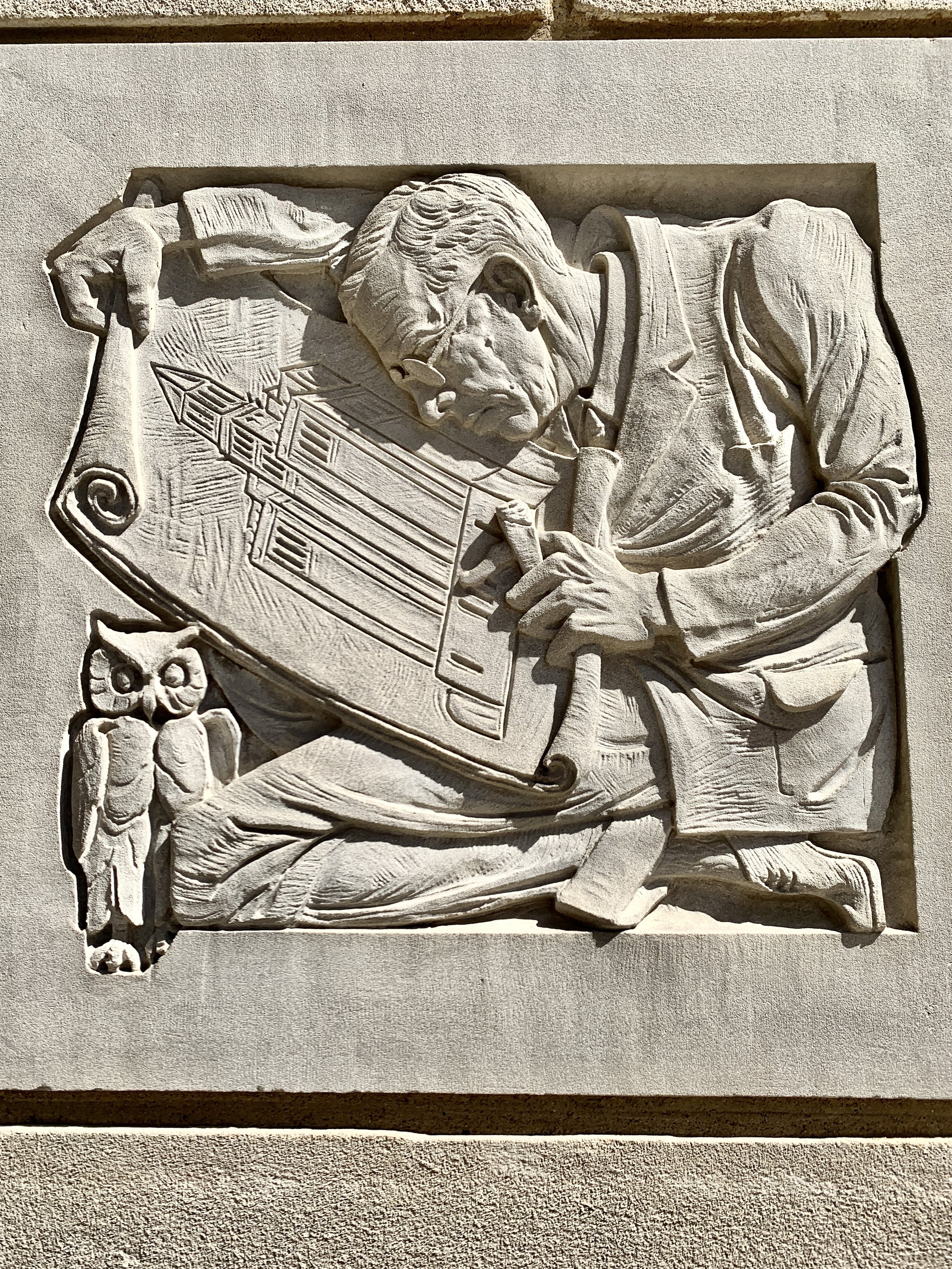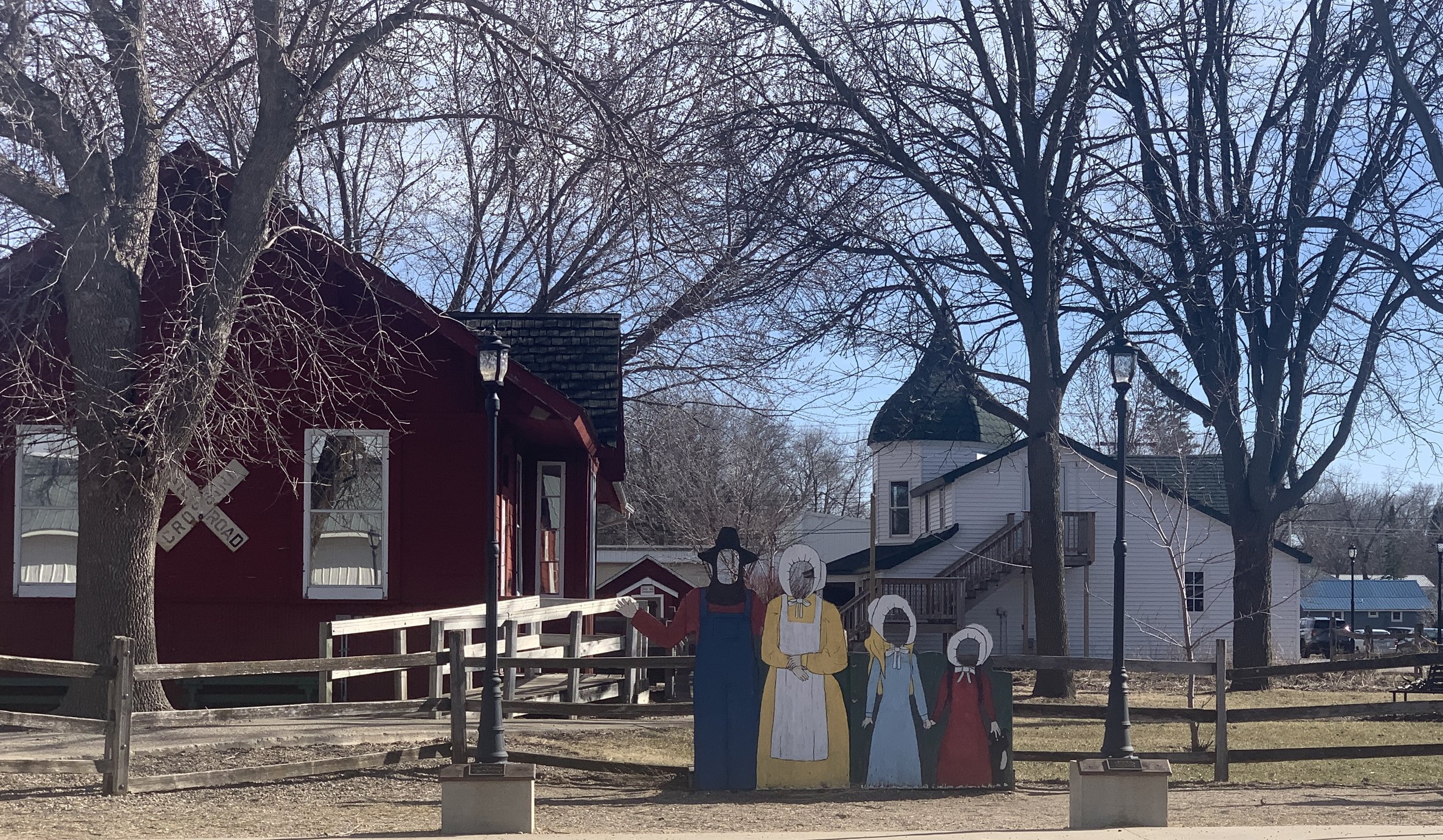Naturally
A fox sparrow and a song sparrow sang as I looked at raccoon tracks in the fresh snow. I appreciated the forced contemplation. The tracks looked like tiny human handprints, with five long digits shaped much like four fingers and a thumb making up the front foot. Five long digits with a more forward-pointing "thumb" and a larger palm pad make up the back foot.
March is the month of melting ice and April is the month of running water. I watched a fox squirrel dig up a buried nut in the yard not long after I’d watched a “Nature” TV episode featuring squirrels. It was delightful. Dr. Mikel Delgado of the University of California at Berkeley discovered that the fox squirrels in her study remembered and located about 90% of the nuts they buried. Their brains grew larger during the fall to help them create a mental map of buried treasures. A fox squirrel could stockpile 3,000 to 10,000 nuts a year.
My yard hosted many common grackles. I accept their ways even when it’s not Grackle Appreciation Day and take nothing they do personally.
Q&A
“What kind of bird is Big Bird?” A large one I’m glad doesn’t come to my bird feeders. He’s not in any of my field guides, he’s 8.2 feet tall and loves birdseed milkshakes. Oscar called him an overgrown meadowlark. When on “Hollywood Squares,” host Peter Marshall asked, "What kind of a bird are you?" Big Bird responded, "I'm a lark." Big Bird told Bob Hope his mother was "a yellow-breasted hornswabble talking tiki" and his father "a yellow-winged liver-lilied fender-bender." In an interview with the Toronto Star, Big Bird called himself a giant golden condor. The book “Sesame Street Unpaved” says Big Bird's scientific name is "Bigus canarius." A big canary. “In A Celebration of Me, Grover,” Big Bird said, "My Grandpa was an emu bird. They can't fly. But they can run! Every fall, Grandpa ran south for the winter." In an interview with TV Guide, Big Bird said, “I'm not a turkey; I'm a lark." In “Everyone Makes Music,” Big Bird sings "Rockin' Robin" and remarks, "Actually, I'm a canary." In a video for Wired, Big Bird said, "I've been told that I'm a lark. Oscar says that I'm part homing pigeon. But, I think I'm a bigus canarius."
“When is the breeding season for chipmunks?” Late February or early March for eastern chipmunks. The first litter could be born in April and a second in late August.
“What is a jacksnipe?” I’ve heard the Wilson's snipe, formerly known as the common snipe, called a "jacksnipe." This snipe is a small brownish bird of wetlands, meadows and damp forest openings. It uses its long bill to probe in wet soil for food and is known for its winnowing flight song over open areas in spring. It’s likely the bird featured in a "snipe hunt" at summer camp. It makes a great story if you were the lucky one left holding an empty bag. There is a jack snipe, the smallest snipe, which prefers marshes, bogs, tundra and wet meadows in northern Europe and northern Russia. It winters in Great Britain, Atlantic and coastal Europe, Africa and India; and breeds in northern taiga in wet, open areas with birch and willow forests.
“What is the largest family of flowering plants?” Twenty flowering plant families have over 3,000 species each, covering approximately 46% of vascular plants. The largest family is Asteraceae, sometimes called Compositae, and it’s widespread, commonly known as the daisy family and has over 32,500 species. The rest of the five largest families of flowering plants are Orchidaceae (orchids) with 28,237 species, Fabaceae (legumes) 20,856, Rubiaceae (coffees and bedstraws) 13,686 and Poaceae (grasses) with 11,434 species.
“Do both sexes of robins sing?” The male American robin produces a rich and melodious caroling: “Carol carol carol, carol carol carol carol.” “Cheerily, cheer up, cheer up, cheerily, cheer up.” Males and females produce a variety of calls and notes—the most familiar being a spirited tut-tut-tut or pick, given as an alarm call in response to predators. A robin’s crepuscular singing may correlate with the physiology of its eyes, which are adapted to low-light conditions like dawn and dusk.
“Why do some birds migrate and others don’t?” Migration is more for food than temperature. Birds migrate to find food and/or a welcoming climate and to avoid predators, parasites and diseases. About 75% of our birds migrate. Reasons for not migrating: food is available (some alter their diets), energy conservation and it’s easier to defend a territory.
Thanks for stopping by
“No matter how bad things get you got to go on living, even if it kills you.”—Sholom Aleichem.
“We are never so much disposed to quarrel with others as when we are dissatisfied with ourselves.”—William Hazlitt.
Do good.
©Al Batt 2022
Neither of these big birds are Big Bird. They are sandhill cranes. Photo by Al Batt.
This just in from the world of nature. Nature talk on the radio.
The lovely Plummer Building, part of the Mayo Campus, opened in 1928. It’s a focal point of Rochester’s skyline and has a 56-bell carillon. When I look at the building, it looks back. It has gargoyles, a hawk for vigilance, an owl for wisdom and a winged salamander because “Why not?”
I was able to guess what this store in Rochester, Minnesota, offered. I considered that a major victory for me.
I saw these on a visit to lovely Walnut Grove, Minnesota, where the Wilder Pageant, an outdoor drama, is held on July 8-9, 15-16 and 22-23.
I saw these on a visit to lovely Walnut Grove, Minnesota, where the Wilder Pageant, an outdoor drama, is held on July 8-9, 15-16 and 22-23.
Mike did a great job on this tour guide that is always available when you need guidance. The National Parks await you.
Mike did a great job on this tour guide that is always available when you need guidance. The National Parks await you.









